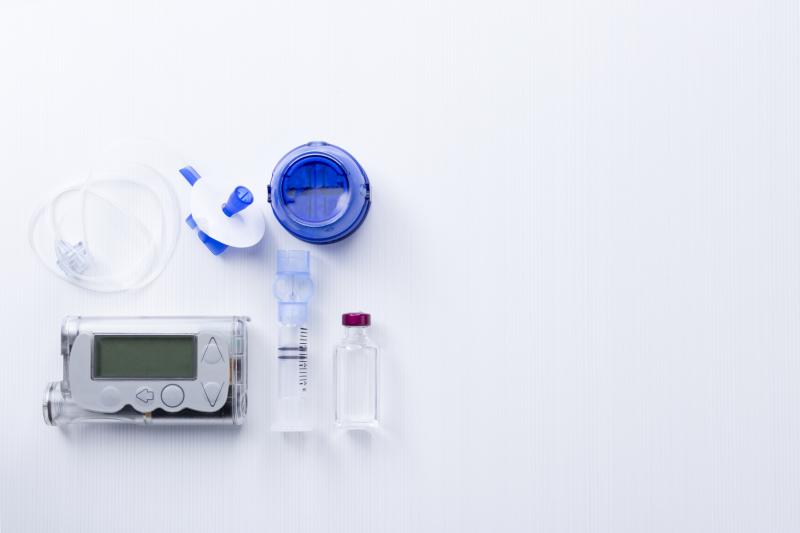 J&J recently said its insulin pump (not shown) is unencrypted, and as such can be vulnerable to hacking.
J&J recently said its insulin pump (not shown) is unencrypted, and as such can be vulnerable to hacking.Continuous subcutaneous insulin infusion (CSII) appears to be superior to multiple daily injections (MDI) for the management of type 1 or 2 diabetes, leading to lower rates of cardiovascular events and better glycaemic control, according to a new study.
“The main limitation of this study is the observational design,” said researchers. “[W]e conducted a retrospective, observational study, so this could make results vulnerable to potential sources of bias, such as the fact that patients who decided to initiate CSII may be more likely to be affluent, compliant to medical advice, and highly motivated to do strict diet control and regular exercise.”
The study included 104 type 1 or 2 diabetes patients who were initiating CSII with tubed insulin pumps after being previously treated with MDI. At baseline, patients had had their disease for an average of 15.4±2.6 years, with a mean glycated haemoglobin (HbA1c) level of 8.2±0.6 percent. A parallel group of 109 patients treated with MDI continuing MDI was also included. All participants were retrospectively followed for 8 years. [Diabetes Metab Res Rev 2020;36:e3219]
The CSII device resulted in significantly lower levels of HbA1c, fasting plasma glucose (FPG) and postprandial glucose (PPG) at the 4-year follow-up (p<0.05 for all). No such changes were reported for the MDI arm.
Improvements in HbA1c, FPG and PPG due to CSII persisted and further strengthened by the end-of-study follow-up, 8 years after enrolment (p-all<0.01). Notably, MDI also produced significant improvements in glycaemic control (p<0.05 for all three measures). However, levels in the CSII group were consistently better than in their MDI counterparts (p-all<0.05).
Moreover, hypoglycaemia (p<0.05) and hyperglycaemia (p<0.01) occurred significantly more frequently in the MDI group, in both type 1 and 2 diabetes patients. Daily insulin dose delivered was also lower in patients who were using CSII devices (42.3±16.8 vs 53.8±19.6 IU/day; p<0.05).
Notably, participants in the CSII arm demonstrated a drop in total cholesterol, triglyceride and low-density lipoprotein cholesterol levels after 8 years, while showing a jump in high-density lipoprotein cholesterol levels (p-all<0.05). MDI patients only experienced a drop in triglycerides at 6 months (p<0.05).
Cardiovascular events also occurred more rarely in the CSII vs MDI groups (p<0.01). This included episodes of atrial fibrillation, premature ventricular contractions, acute coronary infarction, angina pectoris, heart failure and peripheral vascular ischaemia.
“Our preliminary data suggest that CSII treatment seems to reduce the rates of cardiovascular events compared to MDI therapy,” the researchers said.
In the present study, participants who were categorized to the CSII arm received a small programmable device and underwent full training for its proper use. Repeated measures analysis of variance was performed to evaluate the primary outcome of change in HbA1c, while Cox regression analysis was used to assess secondary outcomes.
“[G]iven the observational design of this trial, our data should be validated in a randomized clinical trial; if they will be confirmed, CSII could be chosen for fully informed and motivated patients, at higher risk of developing cardiovascular events,” they said.